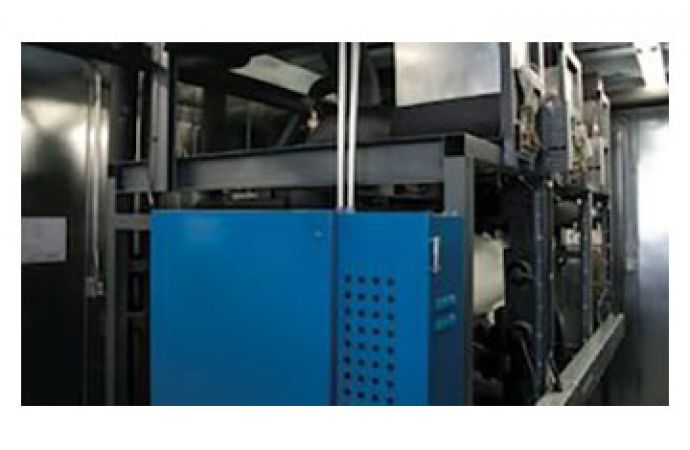After a decade-long test of secondary and cascade CO2 equipment, Food Lion is ready to run its first transcritical refrigeration system - in a warm climate, no less. In the cover story of the latest edition of Accelerate America, the company’s Susan Sollenberger and Wayne Rosa explain Food Lion’s journey.

Over the past decade, Food Lion has taken a careful, incremental approach to evaluating CO2-based refrigeration systems. It is now set to take its biggest step so far – a test of a transcritical all-CO2 booster system.
The system will refrigerate foods in a new store in Southport, North Carolina, and is scheduled to open in the fourth quarter of 2015.
Rosa, energy and maintenance manager for Food Lion, believes the company is ready for the next step. “We’re experienced with CO2 as a refrigerant in secondary and cascade systems,” he said. “We feel very comfortable with it.”
The Southport store is modeled on Food Lion’s standard, 35,000-square-foot prototype, of which there are about 150 in the field. The chain will pick a nearby prototype store using conventional DX refrigeration with R407A to run operational comparisons with the Southport store.
Salisbury, the North Carolina-based division of Food Lion, which operates more than 1,100 stores in the southeastern U.S., follows Delhaize America as rhe second of Food Lion’s subsidiary’s to test a transcritical store. The first, Hannaford Supermarkets, based in Scarborough, Maine, opened the very first U.S. supermarket with a transcritical system in July 2013, and unveiled another last month in Berwick, Maine.
Food Lion and Hannaford are part of a growing cohort of U.S. food supermarket chains testing transcritical CO2 systems that includes Kroger, Ahold USA, Whole Food Markets, Roundy’s, Aldi, Wegmans and Sprouts. Small independent operators, such as Angelo Caputo’s Fresh Markets, are also weighing into the transcritical game.
Among the larger players, Delhaize America, Kroger and Ahold USA have committed – or are part of organisations that have committed – to start reducing consumption of HFC refrigerants in 2015, which a transcritical system would allow them to do. These companies made their HFC pledge as members of the Consumer Goods Forum, a Paris-based group of global retailers and consumer-goods manufacturers.
Food Lion learning from experience
In 2015, Food Lion resumed opening new stores on a small scale, with two this year and two in 2016, creating an opportunity for the transcritical test in Southport. (It no longer plans to install secondary or cascade systems, which it has deployed since 2006).
The biggest lesson Food Lion learned from the earlier CO2 stores was the need for proper training on the new technology. For the Southport store, Food Lion has already attended one training event at Hillphoenix’s Georgia headquarters.
The manufacturers are supplying the transcritical system and had on hand the installation contractor and in-house service technicians, who will be responsible for the system, and the backup service contractor. “We made sure there was training not only for installation but for maintenance,” Rosa told Accelerate America: now available for free download.
Food Lion has also had the benefit of learning from the transcritical refrigeration experience of its sister company, Hannaford Supermarkets. Fortunately for Food Lion and other food retailers testing the waters with transcritical systems, every component part is now rated for CO2 in the U.S., which was not the case when Hannaford installed its first system two years ago.
At the same time, U.S. retailers do not have access to the more affordable transcritical components that are available throughout Europe because some of those components have not yet been UL-certified (Underwriters Laboratories).
“If we can open the market to those European manufacturers, that would put more pressure on costs and help to reduce the initial cost of the system,” said Rosa.
The transcritical system currently carries a first-cost premium of “at least 30%, including installation,” compared to a DX HFC system, said Sollenberger, the chain’s director of energy, maintenance and equipment purchasing.
“We’re not doing this as an energy project,” said Sollenberger. “We’re doing it as a learning opportunity on where we can go with CO2.”
Rosa agreed, pointing out that after Food Lion’s previous pilots with CO2 secondary and cascade systems the transcritical test is “just one more step in 10 years of investigating alternative technology.”
For some retailers, such as Whole Foods Markets, the installation costs for natural-refrigerant systems have so far been artificially high due to the lack of experience among installing and service contractors. Rosa observed that Food Lion’s installation costs – owing to some material savings in smaller copper lines – have been a little lower than for conventional systems.
He agreed that contractors are still apprehensive at the startup stage about what is still new technology for them, and tend to invest more time than usual to avoid missing anything. But he is optimistic that as contractors and technicians gain experience with natural refrigerant systems, installation costs will fall and “help us reduce our initial investment.”
The similarities with a DX system helps accelerate training for transcritical refrigeration and makes it easier to deploy than secondary or cascade equipment, added Rosa.
Can transcritical stand the Georgian heat?
Perhaps the biggest challenge facing Food Lion in its first transcritical implementation is the location of the Southport store, which is a few hundred yards from the coast, close to the state’s hottest area. The Southport location represents a test of whether a transcritical system – which is typically used in cooler regions like Canada and the northern U.S. - can run just as efficiently in warmer climates.
“If (CO2 transcritical) it works there, it will work anywhere in Food Lion’s area,” said Rosa.
Before committing to its transcritical system, Rosa modeled its energy performance at this location. “Our concern is not that a transcritical system won’t work but that there will be an energy penalty associated with it.”
After the system goes live later this year, Rosa will collect data for 12 to 18 months on its energy consumption compared to a DX system in a nearby prototype store. He expects peaks and troughs between the summer and winter seasons, “but if you look at a rolling one year’s worth of energy data, it should be about equal to the DX - I hope we can say it’s a lot more efficient!”
MORE INFORMATION
Related stories

_1475587414.png)


